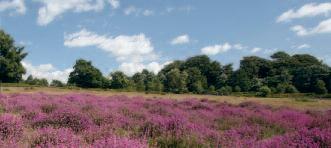
1 minute read
Stanta...................................................................................Jonathan Lawley
At first sight they strike you as being completely natural, when all three are actually unnatural habitats – each a relatively recent post-glacial environment that has been shaped by man. Wangford Warren
It is hard to believe that the Brecks natural state was probably an active and extensive dune system. Here man ’ s intervention, in the shape of millennia of clearance and agriculture, has produced the Brecks ’ patchwork of fields, pastures, heaths and woodland. And where agriculture ends silviculture in the form of Thetford Forest takes over.
Between 1934 and 1980 86% of Brecks heathland was lost. Now little more that 2500ha remain in Suffolk, despite a Forestry Commission programme of heathland creation.
Wangford Warren, photographed by Steve Aylward in November 2009 using a Canon EOS 5D, focal length of 17; F # 16; exposure 1/30. Shot in RAW file format and then converted to a JPEG using Adobe Lightroom.
Hollesley Heath, photographed by Steve Aylward in August 2008 using a Canon EOS 5D, focal length of 17; F # 18; exposure 1/10. Shot in RAW file format and then converted to a JPEG using Adobe Lightroom.






